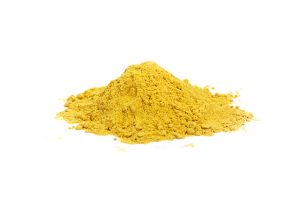
Niclosamide — toxicity, side effects, diseases and environmental impacts
Friday, November 17, 2017 by Rita Winters
http://www.naturalpedia.com/niclosamide-toxicity-side-effects-diseases-and-environmental-impacts.html

Niclosamide is used for pesticides such as lampricides and molluscicides, and is also used in antiplatyhelmintic drugs (to treat flatworm infections) for both humans and animals. As a pesticide, it kills snails, cestodes, and Cercariae by targeting their respiratory systems and their metabolism. Its main target is the golden apple snail (Pomacea canaliculata) known to spawn in rice fields. These golden apple snails are infectious agents of schistosomiasis (snail fever). Niclomaside easily metabolizes in water, but has no long-term effects, and dissipates fast. Accumulation in both water and in the fish is highly unexpected. It may affect amphibious creatures. Niclosamide is used as a lampricide in the Great Lakes, the Finger Lakes, and Lake Champlain, and also as a molluscicide to control freshwater snails which may carry diseases that affect fishes and humans.
The yellow-gray crystalline substance is also used to clear fish ponds or farms of unwanted fish prior to refilling them with fish for breeding. It is highly toxic to fish; however, niclosamide does not accumulate in the fish nor in the water itself, causing no long-term environmental harm. Less than 400 pounds of active niclosamide is used in treatments yearly.
Other names of niclosamide are niclosamide olamine, clonitralid, and 5-chloro-N-(2-chloro-4-nitrophenyl)-2-hydroxybenzamide. There have been no studies yet regarding the risks of niclosamide on humans due to the extremely low volume and infrequency of usage. It is being regulated by the US Fish and Wildlife Service.

List of known side effects
When used as a molluscide, dermal and respiratory exposure to niclosamide will induce mild events of nausea, vomiting, diarrhea, and abdominal discomfort. Dermal exposure may also result in allergic reactions, and some eye and skin diseases.
However, it is highly toxic and fatal to aquatic lifeforms such as fish, invertebrates, mollusks, and amphibians.
Body systems affected by niclosamide
Niclosamide affects the digestive system, the eyes, and the skin.
In mollusks and other pests, it targets their respiratory systems by inhibiting their oxygen uptake and their carbohydrate metabolism.
Items that can contain niclosamide
Drugs that treat tapeworms and other internal parasitic worms may contain niclosamide. Pesticides used in aquatic areas may contain niclosamide. Small bodies of water that were recently cleared may contain niclosamide.
How to avoid niclosamide
Use protective garments such as: rubber gloves, boots, goggles, coverall, and respiratory masks or full face shields. When using the pesticide form of niclosamide, make sure there is proper ventilation in your area to avoid suffocation from inhalation of the chemical. Take extra care when removing gloves and boots as it may spread the substance in the air, which is prone to inhalation. After usage of this type of pesticide, washing thoroughly and disposing of used items is necessary to avoid unwanted exposure to the chemical. However safe these chemicals may seem, avoid skin contact, eye contact, and ingestion at all costs.
Where to learn more
Summary
Further studies are needed in order to determine if niclosamide is fatal to humans. However, niclosamide has some mild effects on the digestive system, the eyes, and the skin. It has no severe environmental impacts, but are toxic and fatal to mollusks and aquatic lifeforms.
Sources included:
Tagged Under: Tags: niclosamide





